
Ruma is a town and municipality in the Srem District of the Autonomous Province of Vojvodina, Serbia. As of 2011, the town has a population of 30,076, while the municipality has a population of 54,339.

The North Bačka District is one of seven administrative districts of the autonomous province of Vojvodina, Serbia. It lies in the Bačka geographical region. According to the 2022 census results, it has a population of 160,163 inhabitants. The administrative center of the district is the city of Subotica.

The North Banat District is one of seven administrative districts of the autonomous province of Vojvodina, Serbia. It lies in the geographical regions of Banat and Bačka. According to the 2022 census, the district has a population of 117,896 inhabitants. The administrative center of the district is the city of Kikinda.

Kovačica is a town and municipality located in the South Banat District of the autonomous province of Vojvodina, Serbia. According to the 2022 census, the town has a population of 5,398, while the municipality has 21,178 inhabitants. It is widely known for its naïve art that the local residents make without any form of art school.
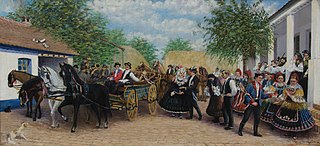
Bački Petrovac is a town and municipality located in the South Bačka District of the autonomous province of Vojvodina, Serbia. The town has a population of 5,227, while the municipality has 11,512 inhabitants.

Demographics of the Socialist Federal Republic of Yugoslavia, during its existence from 1945 until 1991, include population density, ethnicity, education level, health of the populace, economic status, religious affiliations and other aspects. During its last census in 1991, Yugoslavia enumerated 23,528,230 people. Serbs had a plurality, followed by Croats, Bosniaks, Albanians, Slovenes and Macedonians.

Čoka is a town and municipality located in the North Banat District of the autonomous province of Vojvodina, Serbia. The town has a population of 3,119 and the municipality has 8,556 inhabitants.
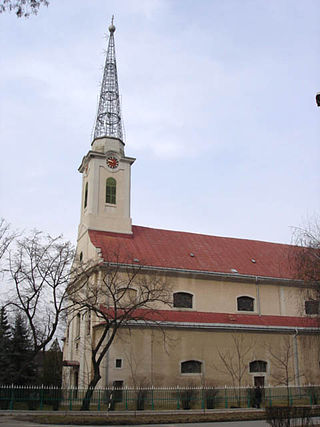
Ada is a town and municipality located in the North Banat District of the autonomous province of Vojvodina, Serbia. It is situated near the river Tisa in the geographical region of Bačka. The town has a population of 9,564, while the municipality has 16,991 inhabitants, and a 75.04% Hungarian majority.

Bačka Topola is a town and municipality located in the North Bačka District of the autonomous province of Vojvodina, Serbia. The municipality is composed of 23 local communities and has a population of 33,321, while the town itself has 14,573 inhabitants.
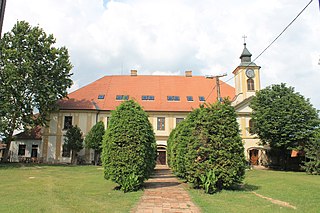
Šid is a town and municipality located in the Srem District of the autonomous province of Vojvodina, Serbia. It has a population of 14,893, while the municipality has 34,188 inhabitants. A border crossing between Serbia and Croatia is located in the town.
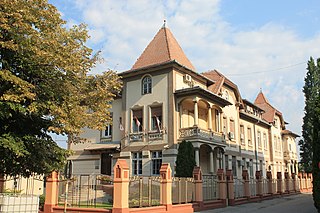
Beočin is a town and municipality located in the South Bačka District of the autonomous province of Vojvodina, Serbia. The population of the town is 7,839, whilst Beočin's municipality population is 15,726. There is also a Beočin Monastery from the 16th century in the municipality.
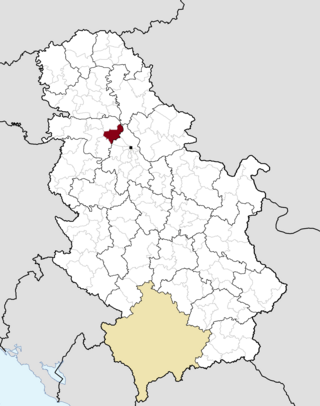
Stara Pazova is a town and municipality located in the Srem District of the autonomous province of Vojvodina, Serbia. The town has a population of 18,042, while Stara Pazova municipality has 65,792 inhabitants. The entrance into town from Inđija lies on 45th parallel north, it is half-way between the North pole and the equator.

Pećinci is a village and municipality located in the Srem District of the autonomous province of Vojvodina, Serbia. The village has a population of 2,581 (2011), while Pećinci municipality has 19,720 inhabitants.

Varvarin is a town and municipality located in the Rasina District of central Serbia. Population of the town is 2,133, and population of the municipality is 17,772.

Bujanovac is a town and municipality located in the Pčinja District of southern Serbia. As of the 2022 census, the municipality has a population of 41,068.

Kisač is a suburban settlement of the city of Novi Sad, Serbia. The settlement has a Slovak ethnic majority.
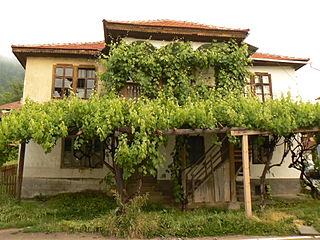
Bosilegrad is a town and municipality located in the Pčinja District of southern Serbia. The municipality comprises an area of 571 km2 (220 sq mi). According to the 2022 census, the town has a population of 2,348, while the municipality has 6,065 inhabitants.

Serbia has been traditionally a Christian country since the Christianization of Serbs by Clement of Ohrid and Saint Naum in the 9th century. The dominant confession is Eastern Orthodoxy in the fold of Serbian Orthodox Church.

Erdevik is a village located in the municipality of Šid, Srem District, Vojvodina, Serbia. As of 2011 census, it has a population of 2,736 inhabitants.
Laudonovac is a village in Serbia. It is situated in the Plandište municipality, South Banat District, Vojvodina province. The village has a Serb ethnic majority (66.66%) with a present Romanian (16.66%) and Macedonian (8.33%) minority. Its population numbering 24 people.

























